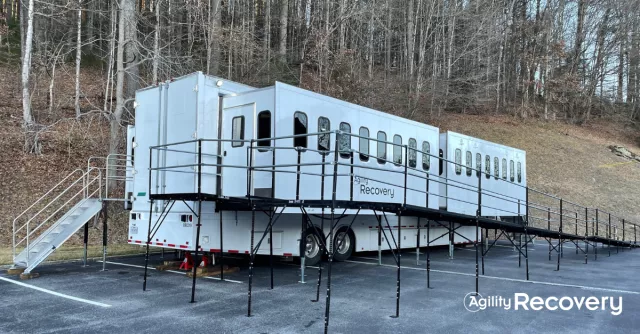How to Update Your Business Continuity Plan in 2021

The question of how to update your business continuity plan remains unanswered for some organizations and businesses. According to a recent study, fifty-one percent of organizations had no plan to deal with the COVID-19 outbreak. The number includes 27.2% of companies that don't have a business continuity plan (BCP). Twenty-four percent are in the midst of drafting one. It was a painful lesson for these companies, with the latter left 'building the plane while flying.'
Prepared businesses would have realized the need to update a business continuity plan. Knowing how to update a BCP will allow any company to manage a crisis.
What is a Business Continuity Plan?
A business continuity plan allows companies to prevent and recover from potential threats. A threat is anything that can affect the day-to-day running of a business.
It can include:
- a natural disaster
- a cyber-attack
- fire
- flood
- other threats that lead to infrastructural damage.
We recently learned that a pandemic also falls into this category.
The development of a business continuity plan should take place before a disaster occurs. It should include input from key personnel as well as stakeholders. The goal is to ensure the organization's operations continue during and after the crisis. It ensures the protection of employees and assets. The aim is to have critical functions up and running in the shortest possible time. The plan identifies all risks and should include:
- How the risks will affect operations.
- The implementation of procedures and safeguards that lessen the risks.
- Testing to ensure the processes work well.
- A review of the process to make sure it is current.
Business continuity plans are an integral part of an organization's risk management strategy. If your organization isn't sure where to start, implementing comprehensive business continuity and incident management platform, such as Agility Planner, can help alleviate the pain of getting started with a BCP.
The Importance of a Business Continuity Plan
Having a business continuity plan for your organization is critical for its resilience. Business disruptions can result in revenue loss, higher costs, and reduced profitability. A business continuity plan will:
- Facilitate analysis of all threats and an understanding of company resources.
- Help your organization recover from the disaster faster and more successfully.
- Let employees know what they should do in the event of an emergency.
- Make provisions for proper communication and operational tools for employees to work effectively.
- Put you at a competitive advantage over competitors that may not have a plan in place.
- Allow you to plan for the worst-case scenario.
Business continuity planning is essential. But your business continuity plan is only effective if updated for the changing business environment.
The Lessons Learned From COVID and the Need to Update a Business Continuity Plan
COVID has affected all organizations, with some specific sectors sustaining more damage. It has made many companies realize the importance of having a business continuity plan in place. It is a living document that requires updates to reflect any potential risk. Unfortunately, many organizations felt the painful consequences of not having a business continuity plan or struggle with keeping it up-to-date with any organizational or industry changes.
In a survey done in the Fall of 2019, before the pandemic's full effects, only 21% of respondents thought their organizations were well-prepared to respond to adverse risk. It definitely showed. COVID's painful lesson was that a crisis could have far-reaching consequences. It disrupted the worldwide economy. This disruption trickled down to businesses, and only those that prepared survived.
A silver lining in the darkness of the pandemic was the financial sector. The financial institutions were more prepared for the aftermath of the pandemic because of the following steps and action:
- Financial institutions provided moratoriums for their clients to help those of them who faced financial difficulties during the pandemic.
- They upgraded their online services, ensuring they were a viable option to complete transactions, eliminating the need to visit the bank.
- They provided special services, including guidance for less technologically-advanced customers.
- They ensured proper sanitization and promotion of good hygiene practices, including social distancing for customers that still needed to visit physical locations.
They adapted to a more flexible work environment and drops in inactivity. Other organizations can learn a lot from how the financial sector responded to business continuity during a pandemic.
The pandemic has provided an opportunity for businesses that didn't have a business continuity plan to create one. And an opportunity for companies that did have one to document what worked and what didn't. It will allow adjustment of the business continuity plan to remain agile.
How to Update a Business Continuity Plan
Updating your business continuity plan is almost as important as creating one. It allows you to analyze the lessons learned in a crisis. Companies that do this are four times more likely to navigate a business disruption successfully.
Tools like Agility Planner allows for centralized, anywhere, and anytime access to your business continuity strategy, streamlining the process and getting a company-wide buy-in.
On a side note, a business continuity manager should also complete an in-depth analysis of your company's current preparedness level before creating or updating your plan. It must include present operational risks and the impact of these risks on your business. This analysis will allow you to understand all the possible implications and the time it will take to recover and return to business-as-usual.
Operating During and After a Crisis
Organizations must adapt to a crisis in a way that allows them to function efficiently. They should do what is necessary to safeguard employees, customers, and stakeholders while still providing optimal levels of customer service.
Here are some areas organizations can focus on and include in their BCPs. They can continually change their policies in these areas to adapt to changes during and after a crisis:
1. Workforce Health and Safety
Such guidelines should be a top priority for organizations and are especially crucial during a pandemic as it directly impacts your employees' health and safety. Organizations don't only have a responsibility to their workforce, but customers, shareholders, and society to have a comprehensive plan for returning workers to the physical location.
Update company policies to include:
- New work schedules, based on the number of employees returning to work
- Protocols for employees entering the building such as hand sanitizing stations and temperature checks
- Repositioning of workstations to facilitate social distancing
- Implementation of a 'no visitor' policy
- New protocols for in-person meetings
- Considerations for limited use of common areas
Other changes should include continuous updates to the company's travel policy. Your company should also provide items to promote better hygiene and safety, including hand sanitizer, gloves, masks, wipes, and specialized personal protective equipment (PPE) is required.
2. Timely Incident Response and Communication
Communication is a two-way process. When in an emergency, a two-way response system streamlines the notification process, keeping you in touch with your crisis team and offering lifesaving advantages. Bi-directional messaging is also known as two-way communication, which means employees can respond to messages. For example, companies can request employees to confirm alert delivery by texting "c" to confirm or "y" for yes. This feature helps risk management teams measure EAS performance. With a two-way communication system, you can not only send push notifications, text, email, and voice messages from your computer, tablet or smartphone, but you can also receive an immediate response and see who is okay and who needs help and prioritize resources accordingly.
Having the option of sending a voice message, SMS text, email, push, or desktop notifications at the same time to reach your team increases the chances of them receiving an update on time.
Use a mobile-first strategy for emergency notification and incident management, so employees can quickly respond to messages, and you can protect your workforce, no matter where they are. Customize messages and reports and quickly notify employees based on their location, department, group, or role.
Risk management teams send emergency alerts through the following channels.
- Computer desktop notifications
- Voice messages by phone (and voicemail)
- Email alerts
- Push notifications
- Text messages
Leveraging all these communication routes will maximize message delivery and improve response times.
3. Business Operations During and After the Crisis
Organizations should have a plan that protects critical business processes so that the company's operations can continue. Protection of critical business processes will depend on the type of business. This plan should include:
- The completion of a business impact analysis (BIA) to determine which functions and roles are critical and non-critical.
- Steps to ensure the continued safety of essential workers when the rest of the workforce returns to work
- A list of trained personnel to act as backups for the vital roles
This will ensure that the company's operations continue during and after the crisis.
4. Internal Technology to Support the Workforce
Network connectivity and internet stability are essential when employees need to work remotely. BCPs should include the technological infrastructure required to support this transition and minimize technical risk. It should:
- Identify the technology required, the training needed and ensure employees familiarize themselves with it
- Include increased VPN capacity
- Include an updated IT policy that facilitates technology lending of equipment for employees such as laptops, monitors, or keyboards
- Include an investment in learning management software so that employees can learn about remote work productivity or how to set up their VPN
- Have a policy that considers the use of company technology for personal use by employees
IT support should also be available to assist employees with home network troubleshooting and diagnostics.
5. Business Continuity Program
Having a business continuity program can help organizations manage a crisis more effectively. It will minimize risk and ensure there is less of an impact on the organization. The program should:
- Assign the organization's emergency preparedness to a pre-selected, dedicated emergency response team including employees from different levels of the organization
- Facilitate the continuity of business operations
- Support technological readiness
- Protect and monitor employee health and safety
- Include physical site management
- Provide a dedicated email and phone number where employees can access 24/7 assistance
The program should ensure adequate responsiveness to employees, shareholders, customers, partners, and vendors.
6. Creation of an Internal Communication Plan
Regular and honest communication is key to reassuring employees and keeping them well-informed. It also builds trust. Your BCP should include how the information will be communicated to employees.
The plan should:
- Facilitate increased communications by the CEO or COO
- Include an assigned person to fact check all information, ensuring it is accurate and from a credible source before sharing
- Inform employees how changes will impact them in terms of compensation, performance reviews, travel restriction updates, and return-to-work policies
- Include a messaging system that covers all employees, including those without email access
An effective messaging system is essential for successful communication.
7. Workforce Protection and Scheduling
During a crisis, there should be flexible work schedules, especially for employees who need to take care of children that are out of school. Workforce protection should include:
- Forecasts of any increases in demand and a system to facilitate extended leaves of absence
- A return-to-work plan that introduces a phased return approach to minimize risk to safety and health while protecting business operations
- The use of workforce management technology to assist with scheduling, managing leave requests, and tracking absences
There should also be a plan for extended remote working arrangements until employees feel comfortable. It is also important to have mental health resources that employees can access during and after the crisis to cope with the changes effectively.
Operating After a Business Disruption
The only way to move forward after the year we experienced in 2020 is to figure out what lessons we have learned, including what we can do better. It provides an opportunity for us to have a better grasp of the events to come in 2021.
There is no time like the present to update business continuity and incident management plan. Planning is key to ensuring your company is prepared for any eventuality. If your organization needs help with risk management and incident response, our team at Agility can help you along this journey. We make business continuity planning simple. Contact us for a personalized presentation.



